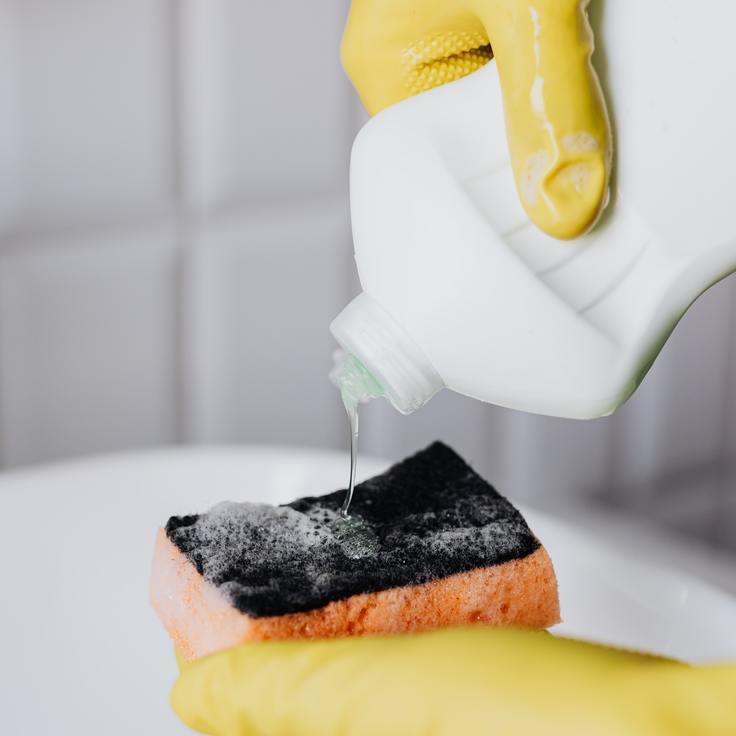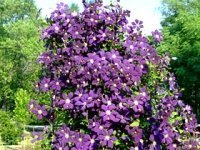The blue colors of the Nepeta
In the garden world blue flowers are few and treasured. The genus Nepeta supplies several easy-to-grow perennials with blooms from white through pink to violet with, of course, the blue tones being the most prized. Nepeta are members of the mint family Laminaceae, of which there are over 250 different species and many hybrids. The closely related genera Dracocephalum, Glechoma and Calamintha were once found within this genus, but have recently been split out by taxonomists in their ongoing efforts to better organize our understanding of ornamental plants.
The catmints are effective for their flora and foliage, both visually and for their fragrance value. Their common name comes, of course, from the stimulatory effect on most house cats. True cat nip (Nepeta cataria) is not generally grown for its ornamental properties but it is not an unattractive plant. The most common catmint species for perennial gardens are: N. grandiflora, N. x faassenii, N. racemosa, N. subsessilis, and their hybrids. All have heart shaped leaves with toothed margins borne oppositely on square stems. Foliage color can range from green through gray-green to a lovely dusty silvery gray. Flowers are tubular and generally borne on long terminal spikes in early to mid summer. Most plants will react to an early spring shearing by producing more compact and controlled vegetative growth and another trim after flowering will usually result in re-blooming later in the season.
Catmints are truly one of the easiest perennials to grow as long as they are not given too much care and attention. They thrive on neglect. Too much water and/or fertilizer will engender thin floppy growth and a disappointing display. However place them in well drained, even poor soil, in full sun and these plants will reward with a magnificent display of flowers and fragrance. Attractive to butterflies, bees and hummingbirds but fairly resistant to deer and rabbits, there are very few pest or disease problems reported for Nepeta. Native to Europe, Asia and Africa, however many species have now naturalized in North America.
Many selections have a somewhat relaxed or sprawling habit which makes them popular as edging for pathways, ground cover and companion plants for roses and other leggy perennials and shrubs. It is this comfortable tendency that often limits their usefulness in formal designs and settings but makes them extremely valuable additions to informal or cottage type gardens. Again some judicious pruning can help to keep their spread under control and, additionally, reward with an extension of bloom.
Most Nepeta are relatively easy to propagate by cuttings or division. Many of the newest hybrids and cultivars are sterile and therefore not able to spread by seed, but the species and many of the older selections have been known to make themselves at home in alternate locations in the landscape.
Nepeta x faassenii 'Six Hills Giant':
One of the taller selections and a great addition to any garden or landscape. The straight species (actually a natural hybrid between N. racemosa × N. nepetella) is generally quite compact but 'Six Hills Giant' is indeed a Goliath among catmints as long as it has some support or staking. The stems, with lovely gray-green foliage will easily reach 2' to 3' (60 to 90 cm) in height but the masses of violet to periwinkle blue flowers does tend to make them top heavy. This selection will provide enjoyment for many years with an extended bloom season. It is also said to be more tolerant of wetter soils than many other cultivars, although it is still an excellent choice for that hot dry location. Height: 2' to 3' (60 to 90 cm), spread: 15" to 18" (40 to 45 cm). USDA 4 to 9.
Nepeta x faassenii 'Kit Cat':
A member of a relatively new series of catmint just becoming available in North America, this selection is a lovely little dwarf with compact foliage and flowers but what it lacks in size it makes up for in profusion of bloom. The nearly true blue flowers are abundant from early to late summer and the petite leaves are a simple dark green. Perfect for hot dry locations, as a ground cover or edger. Height: 18" (45 cm), spread: 30" (75 cm). USDA 3 to 8.
Nepeta subsessilis 'Candy Cat':
Another recent introduction 'Candy Cat' is unusual for a catmint in that its lovely lavender pink flowers are also exceptionally large. Foliage is a glossy dark green. This plant actually prefers a more moist location than many other catmints can tolerate. Height: 2' (60 cm), spread: 3 ½' (100 cm). USDA 3 to 8,
Nepeta 'Walker's Low':
Named by the Perennial Plant Association as the Perennial Plant of the Year for 2007, this great catmint deserves to be on every short list for garden consideration. Soft gray green foliage and blue violet flowers have engendered this cultivar to many perennial connoisseurs. The cultivar name is somewhat misleading unless one is aware that the plant is named for its garden of origin not its growth habit. Height: 30" (75 cm), spread: 3' (90 cm). USDA 3 to 8.








